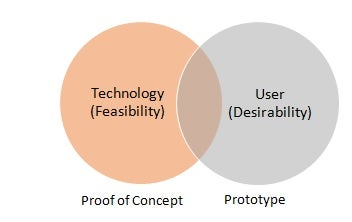Pneumococcal Conjugate Vaccine
Why in News
The government is planning for the nationwide rollout of Pneumococcal Conjugate Vaccine (PCV) under Universal Immunisation Programme (UIP).
- According to government estimates, a countrywide rollout of PCV would require about 50% of the budget of UIP (minus shared costs such as staff salary, establishment costs, etc).
- PCV is the costliest vaccine in the UIP basket that currently covers only about 50% of the 26 million birth cohort in Himachal Pradesh, Madhya Pradesh, Haryana, Bihar, Uttar Pradesh, and Rajasthan.
- PCV was first brought into the UIP basket in 2017 but cost concerns have been among the reasons for its still-partial rollout.
- The cost challenge for India’s immunisation programme is set to mount further as Global Alliance for Vaccines and Immunizations (GAVI) is set to withdraw its support for India from 2022.
- GAVI is an international organisation which brings together public and private sectors to create equal access to vaccines for children.
Pneumococcal Conjugate Vaccine
- Pneumococcal Conjugate Vaccine (PCV) prevents pneumococcal disease.
- The vaccine is a mix of several bacteria of the pneumococci family, which are known to cause pneumonia — hence ‘conjugate’ is included in the name of the vaccine.
- Conjugate vaccines are made using a combination of two different components.
Pneumococcal Disease
- Pneumococcal disease refers to any illness caused by pneumococcal bacteria.
- Symptoms: These bacteria can cause many types of illnesses, including pneumonia, which is an infection of the lungs. Pneumococcal bacteria are one of the most common causes of pneumonia.
- Vulnerable Population: Anyone can get pneumococcal disease, but children under 2 years of age, people with certain medical conditions, adults 65 years or older, and cigarette smokers are at the highest risk.
- Status in India :
- In 2010, the annual incidence of severe pneumococcal pneumonia in India was estimated to be 4.8 episodes per 1,000 children younger than 5 years.
- The top five contributors to India’s pneumococcal pneumonia burden in terms of the number of cases and deaths were Uttar Pradesh, Bihar, Madhya Pradesh, Rajasthan and Jharkhand.
Universal Immunization Programme
- Universal Immunization Programme (UIP) was launched by the government in 1985, to prevent mortality and morbidity in children and pregnant women against 12 vaccine-preventable diseases.
- Under UIP free of cost vaccination is provided against twelve vaccine-preventable diseases i.e. Tuberculosis, Diphtheria, Pertussis, Tetanus, Polio, Hepatitis B, Pneumonia and Meningitis due to Haemophilus Influenzae type b (Hib), Measles, Rubella, Japanese Encephalitis (JE) and Rotavirus diarrhoea.
- The programme is one of the largest health programmes in the world. Despite being operational for many years, UIP has been able to fully immunize only 65% of children under 1 year of age.
Centre of Excellence in Blockchain Technology
Why in News
Recently, the Union Government has launched the Centre of Excellence (CoE) in Blockchain Technology in Bengaluru.
- The CoE will provide world-class blockchain services to the government by identifying and sharing suitable data for the use of government departments.
Key Points
- Centre of Excellence in Blockchain Technology has been set up by the National Informatics Centre (NIC).
- Set up in 1976, National Informatics Centre (NIC) is a premier technology advisor and ICT solution provider to Government at all levels through its ICT Network, NICNET. It plays a crucial role in the development of critical e-Governance solutions and a host of other services required by the Government.
- Objective: To provide Blockchain as a Service (BaaS) for efficient hosting of Blockchain network and allowing all stakeholders to benefit from shared learning, experiences and resources.
- Blockchain-as-a-Service (BaaS) is a third-party cloud-based infrastructure and management for companies building and operating blockchain apps.
- Proof of Concepts: The CoE will facilitate the Government Departments in building proof of concepts for use of Blockchain technology in different dimensions of governance.
- Enhanced Transparency: Applications of Blockchain in the Government are expected to enhance transparency, traceability and trust in e-governance systems.
- Centre of Excellence in Blockchain Technology is the third such centre, following the Centre of Excellence for Data Analytics (CEDA), New Delhi and Centre of Excellence in Artificial Intelligence (CoE in AI).
- A Proof of Concept (POC) is an exercise to test the design idea or assumption. The main purpose of developing a POC is to demonstrate the functionality and to verify a certain concept or theory that can be achieved in development.
- Prototyping is a valuable exercise that allows the innovator to visualize how the product will function.
- While a POC shows that a product or feature can be developed, a prototype shows how it will be developed.
- Blockchain technology is upcoming & niche technology and adoption of the same in sectors such as health, finance, agriculture and various other sectors would aid the government in implementing various programmes.
Irrawaddy Dolphins in the Chilika Lake
Why in News
During the Dolphin Census in Chilika lake, direct sighting of 146 Irrawaddy dolphins has been reported.
- The Census is being carried out using Hydrophone monitoring technique. A hydrophone is a microphone designed to be used underwater for recording or listening to underwater sound.
Irrawaddy dolphins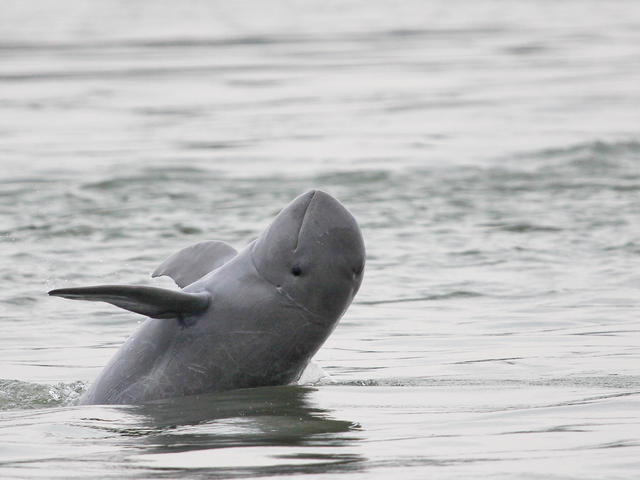
- Irrawaddy dolphins (Orcaella brevirostris) are found in coastal areas in South and Southeast Asia, and in three rivers: the Irrawaddy (Myanmar), the Mahakam (Indonesian Borneo) and the Mekong (China).
- They are ‘Endangered’ as per the IUCN Red List.
- The total population of these aquatic mammals in the world is estimated to be less than 7,500.
- More than 6,000 Irrawaddy dolphins have been reported from Bangladesh.
- Dolphin distribution in Chilika is considered to be the highest single lagoon population.
Chilika Lake
- Chilika is Asia's largest and world's second-largest lagoon.
- It lies on the east coast of India in the state of Odisha, separated from the mighty Bay of Bengal by a small strip of sand.
- It is the largest wintering ground for migratory birds on the Indian sub-continent and is home to a number of threatened species of plants and animals.
- In 1981, Chilika Lake was designated the first Indian wetland of international importance under the Ramsar Convention.
- The major attraction at Chilika is Irrawaddy dolphins which are often spotted off Satpada Island.
- The large Nalabana Island (Forest of Reeds) covering about 16 sq km in the lagoon area was declared a bird sanctuary in 1987.
- Kalijai Temple is located on an island in the Chilika Lake.
Submarine-launched Ballistic Missile: K-4
Why in News
- Recently, India successfully test-fired the 3,500-km range submarine-launched ballistic missile, K-4.
- The test was carried out by the Defence Research and Development Organisation (DRDO) from a submerged pontoon (a flattish boat that relies on floats to remain buoyant) off the Visakhapatnam coast (Andhra Pradesh).
- A pontoon simulates the situation of a launch from a submarine.
- The Circular Error Probability (CEP) of the missile is much more sophisticated than Chinese missiles.
- The CEP determines the accuracy of a missile. The lower the CEP, the more accurate the missile is.
- After induction, these will be the chief support of the Arihant class of indigenous Ballistic Missile Nuclear Submarines (SSBN). It will give India the standoff capability to launch nuclear weapons submerged in Indian waters.
- INS Arihant, the first and only operational SSBN, is armed with K-15 Sagarika missiles with a range of 750 km.
- It means that the submarine has to move closer to the adversary’s coast to launch the missile but the K-4 will be able to overcome that because of its range coverage.
GeM Samvaad
Why in News
Public procurement platform 'Government e-Marketplace (GeM)' has launched a national outreach program called GeM Samvaad to attract sellers to sell products online to government buyers.
- The government is trying to reach out to stakeholders across the country and also local sellers in order to facilitate the on-boarding of local sellers on the marketplace while catering to specific requirements and procurement needs of buyers.
- Under the ‘Voice of Customer’ initiative, the GeM is also looking forward to receiving feedback from users which will be used for making improvements and advancements in the system.
Government e-Marketplace (GeM)
- GeM is a one-stop National Public Procurement Portal to facilitate online procurement of common use Goods & Services required by various Central and State Government Departments / Organizations /Public Sector Undertakings ( PSUs).
- It was launched in 2016 to bring transparency and efficiency in the government buying process.
- It operates under the Ministry of Commerce and Industry.
- The procurement of goods and services by Ministries and the Central Public Sector Enterprises (CPSEs) is mandatory for goods and services available on GeM.
- It also provides the tools of e-bidding and reverse e-auction to facilitate the government users achieve the best value for their money.
- At present, GeM has more than 15 lakh products, around 20,000 services, and more than 40,000 Government buyer organizations.
Wings India 2020
Why in News
Wings India 2020 is a flagship event of the Indian Civil Aviation industry which will held at Begumpet Airport, Hyderabad from 12th-15th March, 2020.
- Wings India 2020 is an international exhibition and conference on the civil aviation sector.
- Hyderabad being the hub of Aviation remains the natural host of the event.
- It will be jointly organised by the Ministry of Civil Aviation, Government of India, Airport Authority of India (AAI) and the Federation of Indian Chambers of Commerce and Industry (FICCI).
- The theme of the year 2020 is “Flying for All’’ and the focus is on the new business acquisition, investments, policy formation and regional connectivity in the civil aviation industry.
- It will be Asia’s largest and most popular gathering in the aviation industry.
Airports Authority of India
- It was constituted by an Act of Parliament and came into being on 1st April 1995 by merging erstwhile National Airports Authority and International Airports Authority of India.
- It is entrusted with the responsibility of creating, upgrading, maintaining and managing civil aviation infrastructure both on the ground and air space in the country.
Federation of Indian Chambers of Commerce and Industry
- It was established in 1927 and is the largest and oldest apex business organisation in India.
- It is a non-government, not-for-profit organisation.
- It provides a platform for networking and consensus building within and across sectors and is the first port of call for Indian industry, policymakers and the international business community.
Gond Tribe
- Gonds are one of the largest tribal groups in the world.
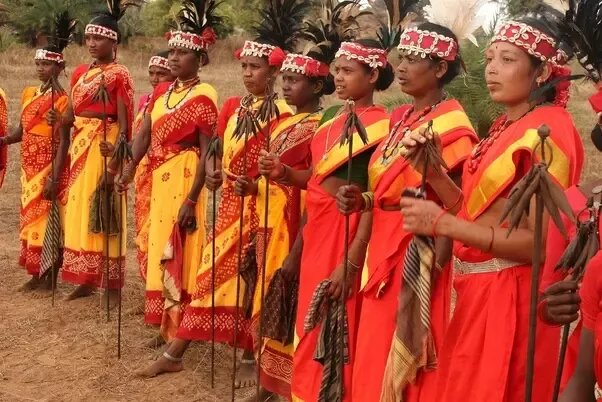
- They are mostly live in Madhya Pradesh, Chhattisgarh, Maharashtra, Andhra Pradesh, Gujarat, Jharkhand, Karnataka, Telangana, Uttar Pradesh, West Bengal and Odisha.
- Gonds are subdivided into four tribes:
- Raj Gonds
- Madia Gonds
- Dhurve Gonds
- Khatulwar Gonds
- Their staple food is two kinds of millet: kodo and kutki.
- Rice is mostly consumed during festival feasts.
- Gonds believe that earth, water and air are ruled by Gods.
- They majorly speak Gondi which is an unwritten language of the Dravidian family.
- It has been notified as a Scheduled Tribe.
Baiga Tribe
- The Baiga (means sorcerers) is one of the Particularly Vulnerable Tribal Groups (PVTGs).
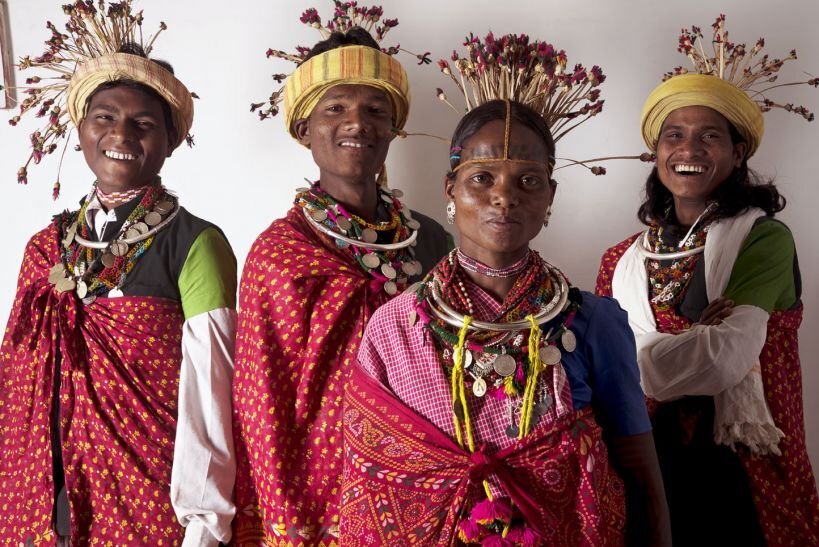
- They mainly live in Chhattisgarh, Jharkhand, Bihar, Odisha, West Bengal, Madhya Pradesh and Uttar Pradesh.
- Traditionally, the Baiga lived a semi-nomadic life and practised slash and burn cultivation. Now, they are mainly dependent on minor forest produce for their livelihood.
- Bamboo is the primary resource.
- Tattooing is an integral part of Baiga culture, every age and body part has a specific tattoo reserved for the occasion.
White Rhino
Why in News
Researchers have created an embryo of the northern white rhino by using In vitro Fertilization (IVF) process.
- Presently, there are only two northern white rhinos in the world.
White Rhino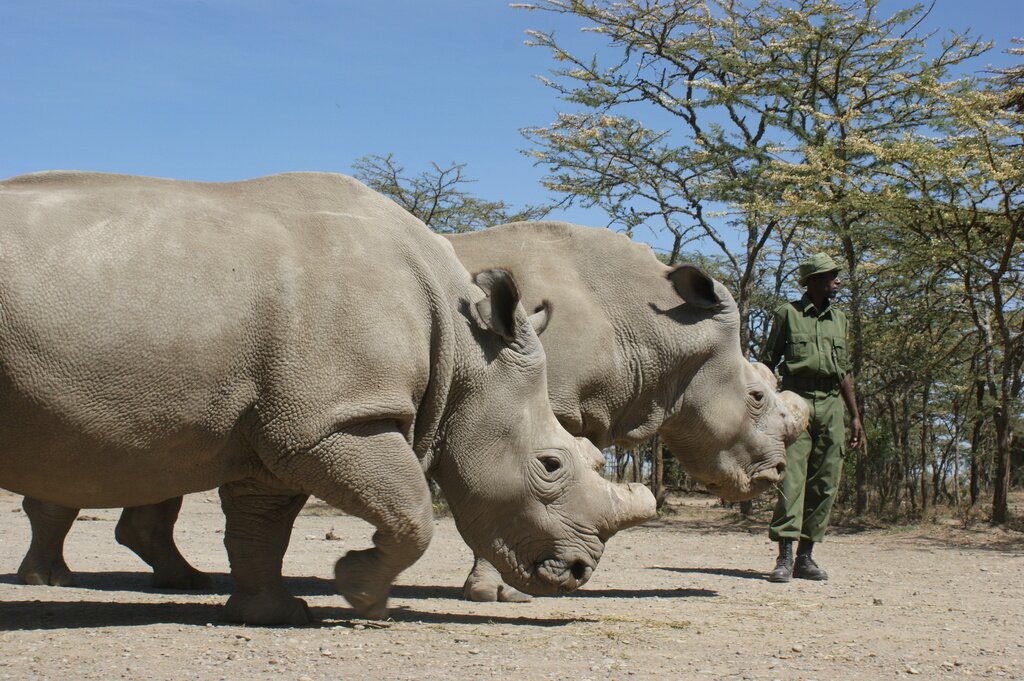
- White rhinos are the second largest land mammal after the elephant.
- White rhinos are also known as the square-lipped rhinoceros due to their square (not pointed) upper lip.
- Two genetically different subspecies exist, the northern and southern white rhino and are found in two different regions in Africa.
- The IUCN Status of White Rhino is Near Threatened. The IUCN status of its subspecies is as follows:
- Northern White Rhino: Critically Endangered
- Southern White Rhino: Near Threatened
- There is also the black (or hook-lipped) rhinoceros in Africa, which too, is fighting for survival, and at least three of whose subspecies are already extinct. It is critically endangered in the IUCN Red list.
- The Indian rhinoceros is different from its African cousins, most prominently in that it has only one horn. It is vulnerable in the IUCN Red list.
- There is also a Javan rhino, which too, has one horn, and a Sumatran rhino which, like the African rhinos, has two horns. Both Javan and Sumatran Rhino are critically endangered in the IUCN Red list.
In vitro Fertilization
- IVF is one of the more widely known types of Assisted Reproductive Technology (ART).
- In vitro comes from the latin word ‘in glass’, i.e. studies are done in a test tube rather than in a human or animal.
- The opposite to ‘In-vitro’ is ‘In-vivo’, which comes from the latin word ‘within the living’. In vivo refers to experimentation being done in a living organism.
- In vitro means outside the body. Fertilization means the sperm has attached to and entered the egg.
- During IVF, mature eggs are collected (retrieved) from the ovaries and fertilized by sperm in a lab. Then the fertilized egg (embryo) or eggs (embryos) are transferred to a uterus.
Rare Steppe Eagle Spotted in Andhra Pradesh
Why in News
A Steppe Eagle (Aquila nipalensis) has been sighted in Andhra Pradesh during Asian Bird Census.
- This is the second time a Steppe Eagle has been sighted in Andhra Pradesh in the past two decades.
- The sighting of this rare species highlights the need for exploration of the diversity of avian life in the State.
Steppe Eagle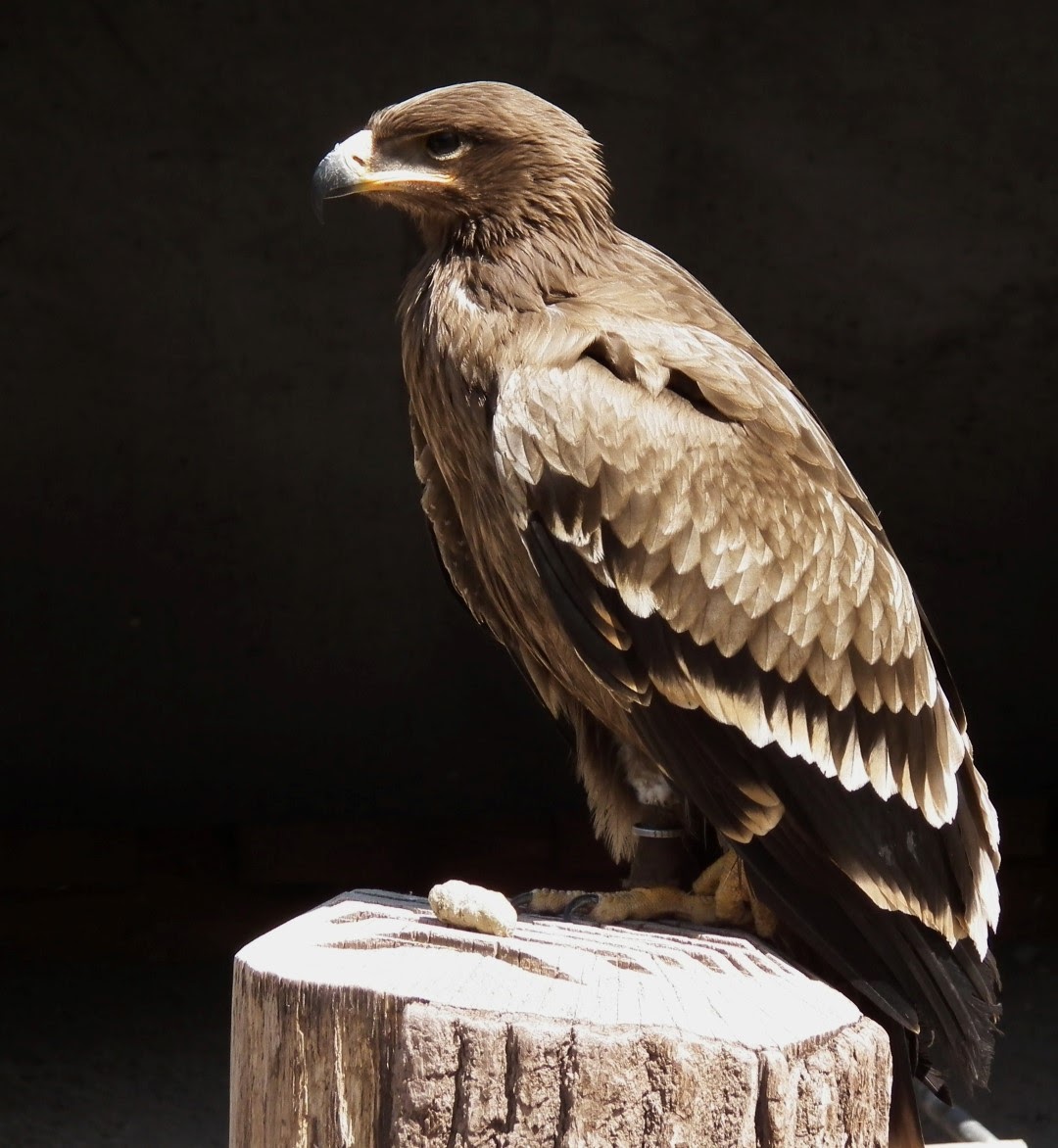
- The Steppe Eagle is a migratory raptor which has undergone extremely rapid population declines within all its range.
- Steppe Eagles may make migratory movements of many thousands of kilometres crossing numerous national jurisdictional boundaries.
- The bird has moved from ‘Least Concern’ to ‘Endangered’ under IUCN Red List.
- It breeds in Russia, Kazakhstan, and Mongolia during the winter season.
- Steppe eagle is the second-largest migratory eagle species to India.
- The threats to the Steppe Eagle include habitat loss/degradation, electrocution on/ collision with energy infrastructure, poisoning through herbicides/ pesticides/ veterinary drugs in food sources, etc.

